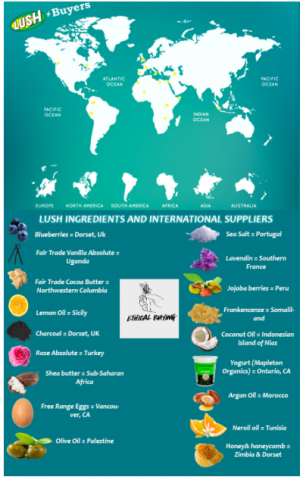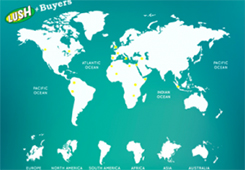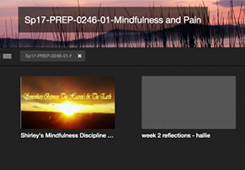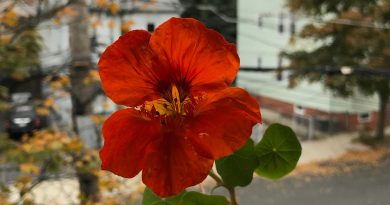Making Room for Creativity with a Multimedia Assignment

Bridging scholarship and practice, David D. Sussman lectures in natural resource conflicts and forced migration at Tufts University, and is a consultant to the World Bank. Previous experience in the field includes time with UNHCR and the International Organization for Migration. He earned his PhD at the Fletcher School of Law and Diplomacy.
You recently engaged your students in the development of mini-websites instead of writing a traditional paper for your course. Why did you want to try this new approach?
Given the increasing interconnectivity of today’s world, the key premise of the course is that we as consumers may be associated with resource conflicts in far-off places. Together, the class considered how products purchased in the United States are linked, via the supply chain, to the often lesser-developed locations from which resources are extracted. For the final project students investigated the sourcing of an item used in our everyday lives and whether it originated in conflict. They created websites to show their findings on the origins of Tide laundry detergent, Campbell’s soup, Starbucks coffee, Hermes bags, and Chipotle burritos, among others.
Overall, the assignment was intended to be engaging as well as meaningful. The use of websites enabled students to further consider how they would present and share their findings, if they wished, to a broader public. It also served as an opportunity to learn from their peers, as during the final course session we took time to share some of the preliminary findings. Another key reason for this assignment was skills development. Given the flood of information at our fingertips, it is incredibly important that students seek and assess that which is reliable. A number also learned how to create a simple website for the first time.
In what ways did you feel that the activity met these goals? What worked well, and what would you do differently?
I fundamentally believe in the value of a liberal arts education, and my teaching is structured so as to better prepare students to become informed, thoughtful, and critical global citizens. The course on “Natural Resource Conflicts” is designed so that students build skills in critical thinking and expression that are important both in college and in the “real world.” Students appreciated the chance to select their own product, and dig into the investigation. It was also great to see the creativity that many of them brought to this assignment. Having a pre-established WordPress template provided a structure, but also enabled them to edit as necessary (e.g. adding additional pages).
Since this type of project was something that few students had experienced before, I needed to spend a bit more time helping them along. For example, at the end of one class I showed through a step-by-step series of slides on how I myself went about finding a topic, and explored it in depth. I also continued to remind them that they needed to investigate more deeply, to peel back the layers on the product’s origin. The use of interim deadlines kept us all thinking about this topic throughout the semester, and assured that we were on the same page in terms of product selection, search for resources, and creation of a map or graphic.
In a few cases students initially struggled in using WordPress, but I hope the skills-development piece was worthwhile. Next time I would again present a basic template for the pages and layout, but let them use other website builders (Wix, Squarespace, Weebly) in case they have familiarity with them. In the end, we would tie all of the projects back to a common web platform.
How did you assess the impact of this activity?
In terms of assessing the overall utility of this project, student responses I have received to date have been enthusiastic. They truly enjoyed this exploration. In terms of grading, I utilized a comprehensive rubric to evaluate a range of criteria, including quality of writing and depth of analysis, earnestness in pursuit of answers, creativity, the development of some visual such as a map or graphic, professional presentation and appearance. Specifically, I wanted to see that they dug into the investigation, and thought out of the box in seeking answers; no company is going to openly show whether the sourcing of their materials is actually tied to conflict. I also permitted students to create a narrative of their research process, in order to explain the steps that they took to reach their conclusion. The assignment provided an alternative means of expression, and engaged a wider range of learning styles. While there was still some report-writing, there was also greater room for creativity, whether it be the map showing the way materials were sourced, a chart presenting data of some sort, or colorful graphics.
What are some of the lessons learned that you might share with others?
This assignment fit alongside other skills-based elements of the course (e.g. writing an Op-Ed, leading a class discussion, making a public presentation). It did require some investment of time before the semester to coordinate with Educational Technology Services, but this proved to be a valuable collaboration in brainstorming and scoping out the activity. Given that this was an alternative assignment, I needed to use some more class time to discuss the approach and address students’ needs for clarification. The use of a website and central platform could be adapted for use in investigations for other classes.
What do you hope to do next?
This is definitely an assignment that I will use again in the future. I will continue to seek feedback from my students to learn what parts of this assignment worked best and if there should be any modifications. Overall, the experience pushed me to continue thinking out the box in terms of new ways to engage students by using technology in the classroom. Beyond the creation of knowledge, the project site will enable ongoing learning (if students decide to make their websites public), as future classes can draw upon these earlier examples and have the option of building upon their work.






